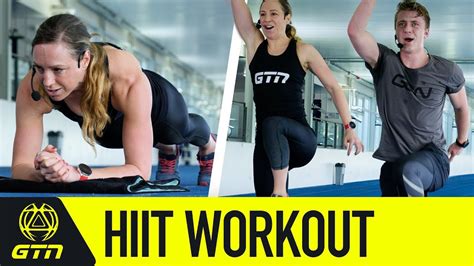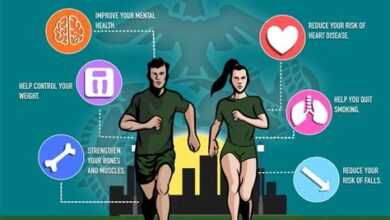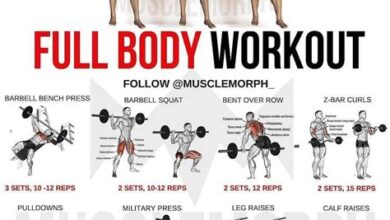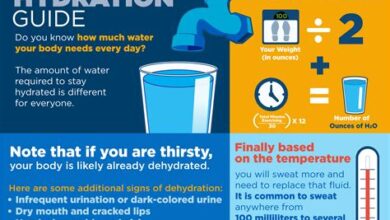High-Intensity Interval Training (HIIT): What You Need to Know

Discover the benefits of HIIT, HIIT vs. traditional cardio, how to get started, and tips for maximizing results in this ultimate guide.If you’ve been looking for a new way to mix up your workout routine, high-intensity interval training (HIIT) might be just the thing for you. This popular workout method has been gaining attention for its ability to torch calories and improve cardiovascular health in a shorter amount of time compared to traditional cardio workouts. In this blog post, we’ll explore what exactly HIIT is and the numerous benefits it offers. We’ll also compare HIIT to traditional cardio and discuss how you can get started with HIIT, whether you’re a beginner or a seasoned fitness enthusiast. And of course, we’ll share some tips for maximizing your results with HIIT so that you can make the most out of your workouts. Whether you’re looking to improve your fitness level, lose weight, or simply switch up your routine, HIIT may be just the thing you need to take your workouts to the next level.
What is HIIT?
High-Intensity Interval Training (HIIT) is a form of exercise that involves short bursts of intense aerobic activity followed by periods of rest or lower-intensity exercise. This type of workout is designed to maximize your effort in a minimal amount of time, making it a popular choice for people with busy schedules. HIIT workouts typically last anywhere from 10 to 30 minutes, but the intensity of the exercise can make them just as effective as longer, steady-state cardio sessions.
During a HIIT workout, you might alternate between sprinting and walking, jumping rope and doing push-ups, or any combination of high-intensity exercises. The goal is to elevate your heart rate quickly and then allow it to recover during the rest periods. This pattern of exertion and recovery is what sets HIIT apart from traditional cardio workouts and is the reason behind its effectiveness.
One of the key benefits of HIIT is its ability to increase your metabolism and burn more calories in a shorter period of time. This is due to the anaerobic nature of HIIT, which causes your body to continue burning calories even after the workout is over. Additionally, HIIT has been shown to improve cardiovascular health, build endurance, and even increase muscle strength. Overall, HIIT is a versatile and efficient form of exercise that can help you achieve your fitness goals in less time.
Benefits of HIIT
High-Intensity Interval Training (HIIT) has become increasingly popular in recent years, and for good reason. One of the major benefits of HIIT is its ability to help individuals burn more calories in less time compared to traditional steady-state cardio exercises. This is especially beneficial for individuals with busy schedules who may not have a lot of time to spend in the gym.
Another key benefit of HIIT is its ability to increase metabolism and burn fat long after the workout is over. The intense bursts of activity followed by short periods of rest have been shown to boost the body’s metabolism, leading to increased fat burning even during periods of rest.
Additionally, HIIT has been found to improve cardiovascular health and endurance more effectively than traditional cardio exercises. The high-intensity intervals push the heart to work harder, ultimately leading to improved heart health and increased endurance over time.
HIIT vs. Traditional Cardio
High-Intensity Interval Training, commonly known as HIIT, has gained popularity for its effectiveness in a shorter amount of time compared to traditional cardio workouts. Traditional cardio typically involves steady-state exercises, such as running or cycling at a moderate pace for an extended period of time. On the other hand, HIIT consists of short bursts of intense exercise followed by brief recovery periods. This fundamental difference in approach sets the two apart in terms of their impact on the body.
One of the main benefits of HIIT over traditional cardio is its ability to burn more calories in a shorter amount of time. The high-intensity intervals in HIIT cause the body to continue burning calories even after the workout is over, due to the excess post-exercise oxygen consumption (EPOC) effect. This means that the body continues to burn calories at a higher rate post-workout, leading to greater overall calorie burn compared to traditional cardio.
Additionally, HIIT has been shown to be more effective at improving cardiovascular fitness and increasing muscle mass as compared to traditional cardio. The intense bursts of activity in HIIT workouts help to improve both aerobic and anaerobic fitness levels, while also promoting the development of lean muscle tissue. Traditional cardio, while still beneficial for cardiovascular health, may not provide as much of a boost to muscle growth and strength as HIIT.
How to Get Started with HIIT
High-Intensity Interval Training (HIIT) is a workout technique that involves short bursts of intense exercise followed by periods of rest or low-intensity exercise. It’s a great way to get an effective workout in a short amount of time, making it perfect for those with busy schedules. If you’re looking to get started with HIIT, there are a few key things to keep in mind to ensure you’re maximizing the benefits of this workout.
First and foremost, it’s important to start slow and gradually increase the intensity of your workouts. HIIT can be very demanding on the body, so if you’re new to this type of training, it’s crucial to ease into it to prevent injury. Start with shorter intervals and longer rest periods, then gradually decrease the rest time and increase the intensity as your body adjusts and becomes stronger.
Another key aspect of getting started with HIIT is to choose exercises that are suitable for this type of training. HIIT can be done with a variety of exercises, such as sprints, burpees, jump squats, and more. It’s important to choose exercises that you enjoy and that work well for your body, as this will help to keep you motivated and committed to your HIIT routine. Additionally, be sure to focus on proper form and technique to prevent injury and ensure you’re getting the most out of each exercise.
Tips for Maximizing HIIT Results
When it comes to High-Intensity Interval Training (HIIT), getting the most out of your workout is essential. Here are some tips for maximizing your results and achieving your fitness goals.
Vary Your Workouts: To prevent plateauing, it’s important to switch up your HIIT routine. Incorporate different exercises, intervals, and rest periods to keep your body challenged and constantly adapting. This will help you continue to see progress and prevent boredom.
Focus on Form: Proper form is crucial for maximizing the effectiveness of your HIIT workout. Pay attention to your body positioning and movement to prevent injury and ensure that you are targeting the right muscles. Take the time to learn the correct form for each exercise and make adjustments as needed.





